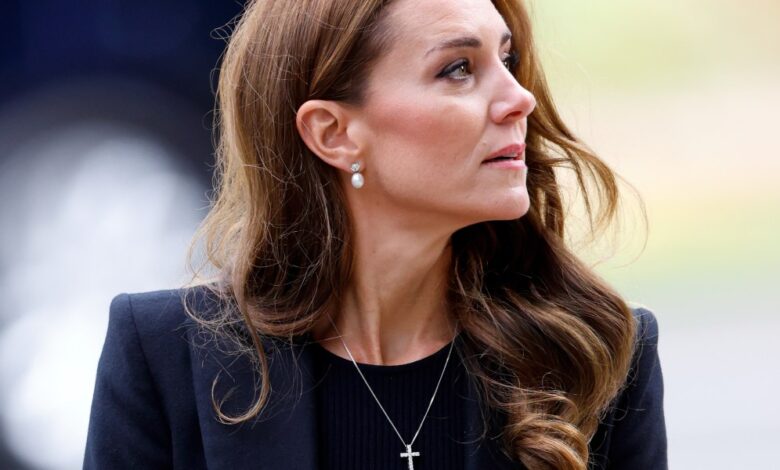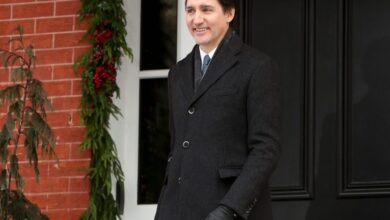

The British royal family owes much of its popularity with the public to its careful control of image and perception. Take the royal weddings which started being televised in 1981 with the marriage of then-Prince (now King) Charles to Lady Diana Spencer in a spectacle viewed by 14 million households. Three decades later, Prince William and Kate Middleton’s 2011 marriage drew 18 million viewers, while Queen Elizabeth’s funeral in September 2022 drew millions of mourners across the world.
The perfectly orchestrated fairytale grandeur (combined with copious media coverage) has fueled a longstanding fascination with the royals. But this week’s uproar over a manipulated photo has turned the royal fairy tale into a public-relations nightmare for the family. Aside from laying bare the importance of myth in royal lore, the episode offers a preview of what the public can expect as AI becomes increasingly mainstream: a crisis of confidence for the communications industry as a whole as more people question the legitimacy of photos, statements, and information released by once-trusted institutions.
“The Catherine Middleton photo controversy signals a turning point in the wider public doubting what they see,” Rebecca May, founder and director of London-based public relations firm RM Publicity, tells Fortune. “As such a worldwide institution and trusted family globally, it naturally raises concerns in the future of trusting authoritative organizations and institutions.”
To be clear, no one has confirmed that the photo released by Kate Middleton this weekend was AI generated or manipulated, but the public reaction highlights the erosion of trust in media that is likely to accelerate in the coming years.
What’s going on with Kate Middleton?
If you haven’t kept up with the Kate Middleton photo drama, here’s a quick rundown. In mid-January, Kensington Palace released a statement informing the public that the princess would be out of the public eye through Easter (the last weekend of March) for “planned abdominal surgery.” Since then, conspiracy theories about her true whereabouts have been plentiful—especially after the recent release of three photos believed to have been manipulated.
Last week, a pixelated photo surfaced of a woman who appeared to be Kate wearing sunglasses in a car with her mother, Carole Middleton. Then on Sunday, Kensington Palace released a photo on X and Instagram of the Princess of Wales with her three children (Prince George, 10; Princess Charlotte, 8; and Prince Louis, 5) that was subsequently killed by the AP, Getty Images, Reuters, and other major news outlets for being manipulated. The following day, Kensington Palace released a statement on X from Kate saying that she had actually been the one to edit the photo.
People from all walks of life had something to say about the botched Photoshop job, pointing out errors ranging from Charlotte’s skirt jutting out at a strange angle, to a lack of wedding or engagement rings on Kate, and odd hand positioning by Louis, to cite just three out of a dozens of criticisms.
But sketchy photo releases of Kate didn’t stop there. On Monday, the Daily Mail released a photo of Kate and William in a car just hours after she had issued her public apology for the “confusion” about the Mother’s Day photo. William was on the way to Westminster Abbey for the annual Commonwealth Day service, but Kate was heading to a “private appointment,” according to the Daily Mail. Online observers have also studied this photo and allege that this, too, was manipulated somehow, drawing comparisons to past photos of the princess and saying that her image had been placed in the photo.
The Kate photo debacle is only the beginning of media mistrust
Editing photos isn’t a novel concept; the royal family for decades has been doctoring photos of themselves to keep up their pristine facade. Indeed, we typically expect for photos of famous people to be airbrushed or perfected—and we regular folks do the same. We remove pimples from headshots, facetune our bodies to look skinnier, and crop and change the lighting on photos to appear more attractive.
“Manipulating images isn’t a novel concept, and to this day images will be airbrushed to remove ‘imperfections,’ or add in things that aren’t there—but AI technology has added a new, insidious layer to image manipulation that could destroy careers,” Georgia O’Brien-Perry, a UK-based digital PR manager for Bulldog Digital Media, tells Fortune.
But the advent of generative AI has supercharged the level of image manipulation, even making possible the creation of utterly fabricated and believable scenes. That’s degrading public trust.
“The growing sophistication of AI means these fabricated images are becoming increasingly indistinguishable from the truth,” O’Brien-Perry says. “When a photo of someone as high-profile as Kate Middleton gets accused of AI forgery, it calls to question how we know what to believe anymore.”
This boondoggle by the palace has ultimately accomplished the opposite of what they set out to do with the original notice that Kate would be out for a couple months. By releasing manipulated photos, all they’ve done is conjure up a level of mistrust with the public. And it’s all a sign of where AI manipulation is headed, communications pros say.
“This is the first of what I am afraid will be a multitude of ‘corrections’ made over the coming years as AI usage proliferates,” David Thalberg, president of marketing and public relations firm Stryker-Munley Group, tells Fortune. “AI is going to show itself as an incredibly useful tool in a multitude of businesses and industries, particularly in media and communications—but as with every new tool and technology, the philosophy can’t just be ‘Ready. Shoot. Aim.’”
Other professionals believe AI-generated or otherwise manipulated photos will only continue to get more mainstream—and that we’ll just have to accept it.
“This is just the new reality, thanks to AI,” Jonathon Narvey, CEO and founder of Mind Meld PR Inc., tells Fortune. “Media outlets will have to get used to receiving and accepting AI-generated images for breaking stories and famous people. Not ideal, for sure—and clearly dystopian.”





